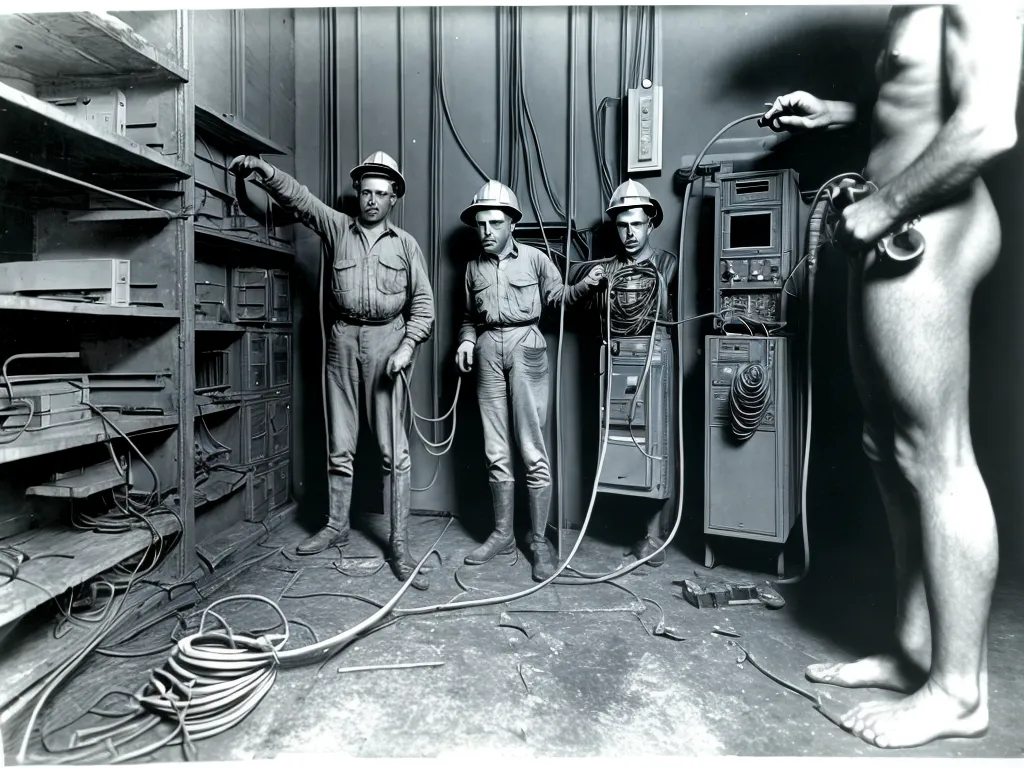
Introduction
Electricity is an integral part of modern life that most take for granted. However, the early pioneers who developed electrical systems faced many shocking dangers without the safety knowledge and equipment we have today. Understanding how these workers coped can provide perspective on just how hazardous early electrical work was.
Dangers of Working With Early Electrical Systems
In the late 19th century, electrical systems were rapidly expanding into homes and businesses. However, safety precautions were primitive compared to modern standards. Some key dangers included:
Exposure to Live Wires
Early electrical systems lacked insulated wires and safe connector systems. Workers would handle live, exposed wires running high voltages. Accidental contact could result in severe shocks, burns, and electrocution. Fatalities were tragically common.
Lack of Safety Equipment
Tools like insulated gloves, hard hats, and safety goggles now standard in the electrical trade were not used regularly back then. Workers lacking such protection faced increased risks of shocks and burns.
Minimal Safety Standards
Legally mandated electrical safety standards, testing procedures, and worker training requirements did not exist. Work was often performed in a hazardous, unregulated environment.
Poor Understanding of Electricity's Dangers
The human body's vulnerability to electrical shock was not well understood. Many did not realize current could kill at certain amps, volts, and pathways through the body. Workers lacked adequate respect for caution.
Efforts to Increase Safety
Though electrical work remained extremely hazardous, some key efforts did improve safety to a degree:
Rubber Insulating Mats
Rubber mats could be stood on to insulate workers from ground currents. However, mats left areas like hands and head exposed. Furthermore, rubber degraded over time.
Rudimentary Safety Gear
Rubber gloves and boots were sometimes used, providing limited insulation. Simple face shields offered minor protection as well. However, most gear was uncomfortable and unreliable.
Testing with Animals
Animals like horses were used to test wires and equipment as early warning systems to detect live current flow. However, animal testing was inhumane and not always effective.
Early Safety Standards
Some basic safety principles and codes emerged. For example, certain voltages were designated more hazardous. regulations required placing live wires higher up. Such standards provided limited guidance.
Safety Training
Apprenticeship programs and manuals offered informal safety instruction. However, training remained unstandardized and minimal. Most learning was by tragic accident rather than proactive education.
Worker Reactions and Coping Strategies
Facing such dangers, electrical pioneers had to develop their own fatalistic methods of coping:
Acceptance of Risk
Workers knew the job was extremely hazardous. Most simply accepted the risk, believing the rewards of electrical work were worth the gamble. Danger was expected.
Reliance on Chance
Luck or fate was seen as the best protection by many. They hoped to avoid freak accidents through random chance rather than skill. It bred a certain carelessness.
Ignoring Fear
Veteran workers suppressed their fear through machismo and bravado. Admitting fear was seen as weakness. They fooled themselves into downplaying the dangers.
Safety Shortcuts
Saving time and effort often won out over safety. For example, properly suiting up in rubber gear took time, so was skipped. Patience and caution gave way to rushing.
Speculative Safety
With hazards poorly understood, speculation substituted for actual protection. Workers might improperly believe gloves offered full protection when they did not. Myths about safety spread.
Lack of Worker Power
Workers had little power to demand improved safety from bosses. They depended on the job for survival, so simply toiled in perilous conditions. Speaking up risked dismissal.
Lingering Dangers Today
Though electrical work is far safer today, dangers still lurk. Good training and caution are still essential. We owe much respect to those early pioneers who risked life and limb working with primitive electrical systems. Their sacrifices pioneered the convenient power systems we enjoy today.